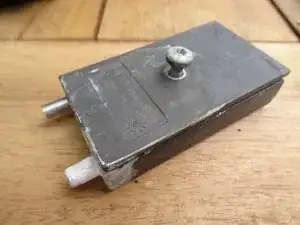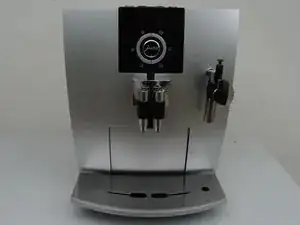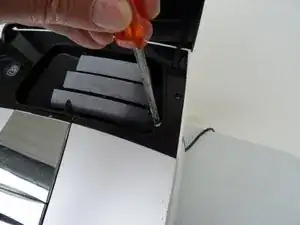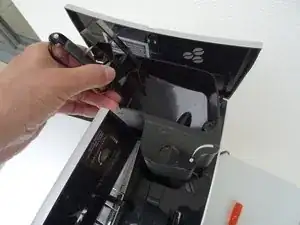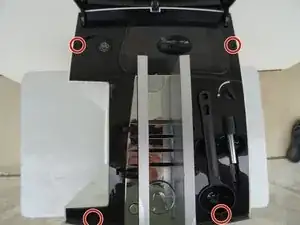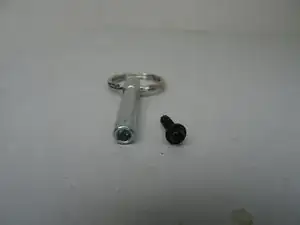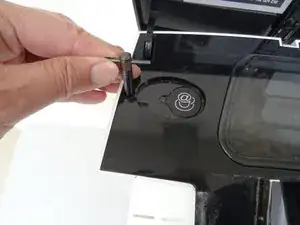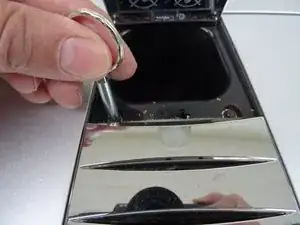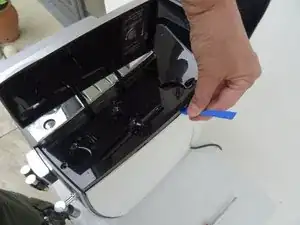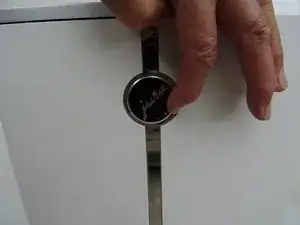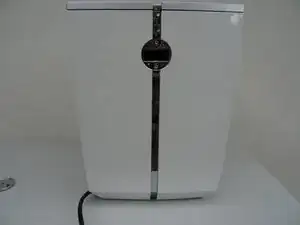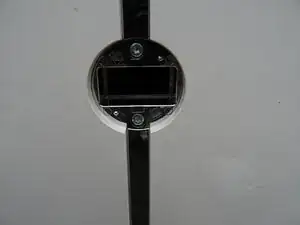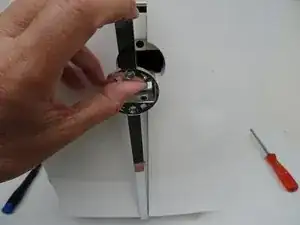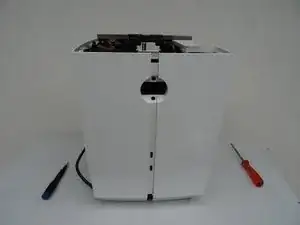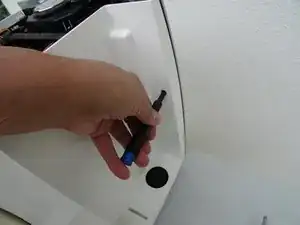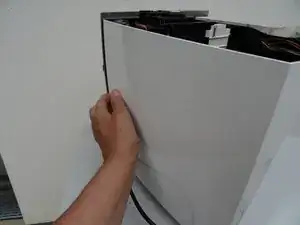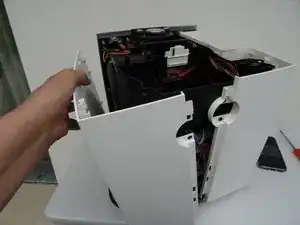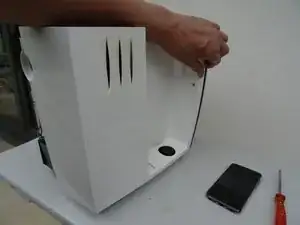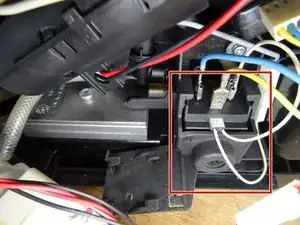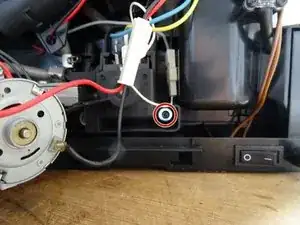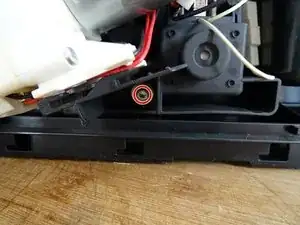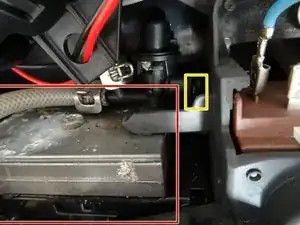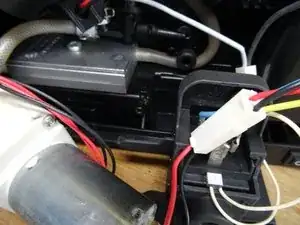Introduction
If water is dripping under the floor panel in the front right area, you need to investigate where it is coming from. Check the water heaters, ceramic valve, exhaust valve and their hoses. If everything is dry, the somewhat inconspicuous heat exchanger could also be leaking at the bottom. It is made of light metal, its lid has only one screw in the middle. The lid can warp and is difficult to seal. A new heat exchanger solves the problem. To get better access, the ceramic valve must first be loosened, its connections can remain. The outlet valve should also be removed, the connections can remain.
Tools
Parts
-
-
Flip open the lid of the bean compartment.
-
Unscrew the two slotted screws inside the bean compartment. The screws have a rubber washer and will not come out completely.
-
Remove the bean compartment.
-
-
-
Now you can pry up the top cover all around.
-
Remove the top cover. This often requires a little force.
-
-
-
Turn the device with the back facing you.
-
Turn the Jura label a few degrees counterclockwise. If it's hard to do, use a small suction cup.
-
Remove the Jura label.
-
-
-
Underneath the label you will find two Torx T15 screws. Remove them.
-
Carefully pull the top of the chrome cover slightly outwards, then push it down and put it aside.
-
-
-
The motor for the drainage valve is located in the lower side of the unit near the center. It is fastened with three screws and connected with several flat plugs. In the picture, the ceramic valve has already been pushed off.
-
-
-
Unscrew the three Torx T15 screws on the motor for the drain valve. Pay attention to the washers underneath.
-
Carefully pull out the motor.
-
If you want to replace it, you still have to disconnect the flat connectors. Note where the connectors are connected.
-
-
-
Here is the removed heat exchanger. You'll find it at the bottom behind the ceramic valve.
-
You should also detach the exhaust valve for better access. To do this, pull off the clip on the right-hand side.
-
Follow the steps in reversed order to disassemble your device
